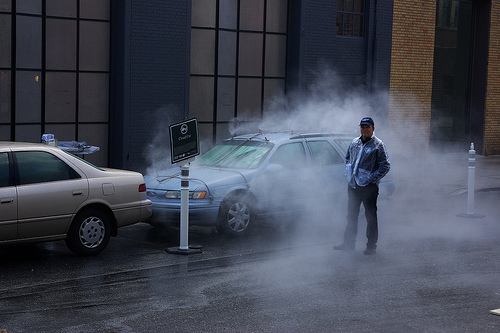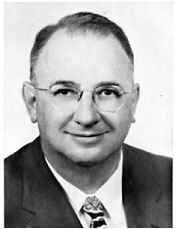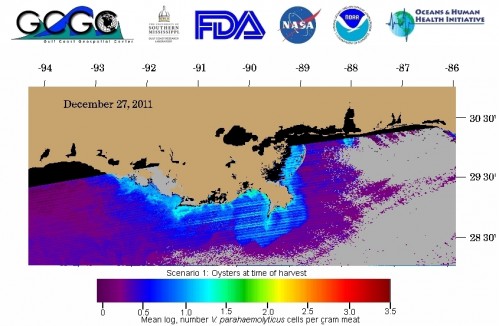by William Hooke, AMS Policy Program Director, from a post on the AMS project, Living on the Real World.
Our community has already begun to assemble in New Orleans for this year’s AMS Annual Meeting, which formally runs from Sunday, January 22 through Thursday, January 26. Before the last paper’s presented and the last exhibit is repacked and shipped home, maybe some 4000 people will have come through. That’s not counting the thousands of members of the general public who may show up for Sunday’s WeatherFest.
Let’s start by eliminating the one people tend to think of first. Travel to an exotic meeting site? Or the local cuisine? Fact is…it’s winter air travel, folks. Think flight delays. Jet stream turbulence. Jet lag under the best of circumstances; exhaustion under the worst. A year ago our meeting was in Seattle, where the Pacific Northwest is today struggling with a foot of snowfall in some places, power outages, massive flooding, and flight cancellations and delays. Picture our members from there trying to get here this year. Business travel is held in high regard by people who don’t have to do it.
Instead, start with:
10. Give talks. If you’re like me, this is a perennial motivator…maybe you even work for an organization that’ll fund your trip only if you can point to an accepted paper in an oral or poster session. Back when I was a federal manager in the NOAA labs I found this carrot to be a great productivity enhancer. I could count on everyone publishing several papers a year so they might go to the meetings.
9. Hear talks. But the reality? The real reason I was happy to send them to meetings was that I knew their experience would be like mine. Every year I’d get excited about what I was doing and think it was really cool stuff. Then I’d get to the meetings and be stunned to find that everyone else had done REALLY COOL STUFF. I knew my people would come back energized from the meeting, and their subsequent work would be higher quality and more relevant because they’d have seen what their peers and colleagues were doing.
8. Spot talent and potential. As a first-level supervisor of scientists and engineers I used to love the opportunity to spot the up-and-comers. I wasn’t the only one trolling for new hires. Government, universities, private-sector – we were all on the prowl for the next-big-thing and the super stars of tomorrow.
7. Networking. We didn’t call it that years ago, but the idea was the same as it is today. For each of us, the meeting experience is like fine wine…it keeps improving with age. You never say goodbye to those contacts you made in the course of your earlier work…at each meeting, and as your work changes direction, you add contacts and connectivity, and the stimulus provided each time around goes up exponentially, factorially. Here’s a metric: each year, it takes you more time to make it down the meeting hallway. [An aside: early-career professionals find this networking shtick a tough slog, and in these days of constrained funding, they’re finding it more difficult to make the meetings themselves as well. We should all applaud the efforts of volunteers who are working to institute special functions and mentoring for young professionals.]
6. Committee work. Speaking of volunteers, over time, you get sucked in…the experience is great and you tire of being a free rider…you want to give back. You find yourself volunteering, or at least not-ducking, any one of hundreds of roles on the Society’s different journals, or specialist areas or Boards or Commissions, or program committees for a Symposium or Conference embedded within the Annual Meeting, or maybe even the AMS Council. And then the year comes when you realize you’re spending as much or more of your time in side meetings and hallway conversations as you’re spending in the technical sessions. All that volunteer effort works a palpable improvement in the quality and relevance of the sessions, the joint sessions, and many of the special features that add value to today’s meetings.
5. Exhibiting. I’ve never been an exhibitor. At each meeting the Policy Program has a desk at the AMS Resource Center, but our contributions are barely worthy of the name. But as a staffer, I’ve developed a powerful appreciation for what the exhibitors do to add value to the meeting. On the exhibits floor, the content of all those talks on satellite instruments and radar algorithms and surface sensors comes to life. Members get a flavor of the exploding variety and utility of private-sector services. And the Monday- and Wednesday evening receptions on the exhibits floor provide a venue for even more networking and informal discussion. It’s an incubator for business and ideas. But that’s only the tip of the iceberg. The private sector makes significant financial contributions to the health and the spirit of the entire enterprise. If you’re enjoying a cup of coffee between sessions or a bite to eat at a committee meeting, chances are good you have a contribution from the private-sector to thank. Most of us take this for granted when we should instead be walking from booth to booth in the exhibits area thanking all those corporations and agencies who make the Society’s meetings possible and relevant.
4. International. Another dimension I’ve come to appreciate only belatedly? The special influence provided by our international members and partners. The few dozen heads of National Meteorological and Hydrological Services (NMHS’s) worldwide who come to our meeting from every continent are small in number, but they punch above their weight. Their engagement reshapes the Annual Meetings fundamentally. In aggregate, they represent additional markets for products and services, and so swell the ranks and contributions of exhibitors. They attract U.S. domestic leadership – public, private, and university – to the meeting. They and the scientists who come from abroad enable a worldwide dialog.
3. WeatherFest. Why not, then, also draw in the public from the city where we’re holding the meeting? Over the past decade, we’ve started to do this, with gratifying results. Nowadays, each year on the opening Sunday of the Meeting, hundreds, if not thousands, of families and individuals from the local area drop by. They meet their broadcast meteorologists and other area personalities. They accumulate a little swag. Along the way, the kids (and maybe the occasional adult) pick up a few tidbits on weather, climate, and water. Everybody wins. An example? Picture kids getting a plate and some Play-Doh. They shape a coastal area and a coastline out of the Play-Doh. They surround that coast with water on the plate, add a few sugar cubes to simulate coastal construction. A hair dryer simulates a hurricane. The storm surge and spray damages the sugar cubes…don’t you wish you were here? Everyone has a good time, but more importantly, young people are getting jazzed about science…and about reducing disaster losses.
2. Celebrate the progress of science and technology. Step back…give yourself just a little distance from all the individual elements and myriad proceedings…and you’ll find in the sweep of what you see something to celebrate…the extraordinary pace with which our disciplines and their related technologies are advancing. The progress is far quicker than forty years ago, and continuing to accelerate. Truly exhilarating! To be part of such continuing accomplishment? Nothing else in life compares…
Except for…
1. The best reason for being here…the application of this accumulating body of knowledge for the benefit of mankind, not just at any single meeting, but over a sustained period of years. You see, the AMS, unlike any purely scientific society, considers such application an integral part of the community’s work…not just a hoped-for side benefit. To see the natural science and the social science come together, to see their integration into decision support in agriculture, emergency management, energy, environmental protection, public health, transportation, water resource management, and much more? To be part of a close-knit, high-minded community that holds this shared value above all others and ahead of self?
Priceless.





